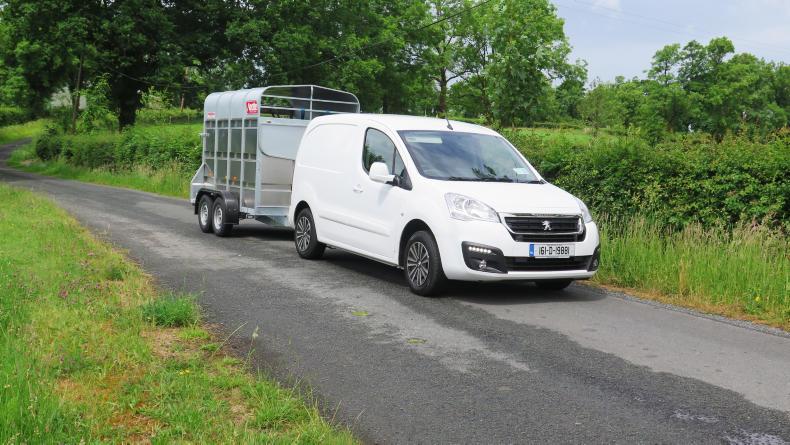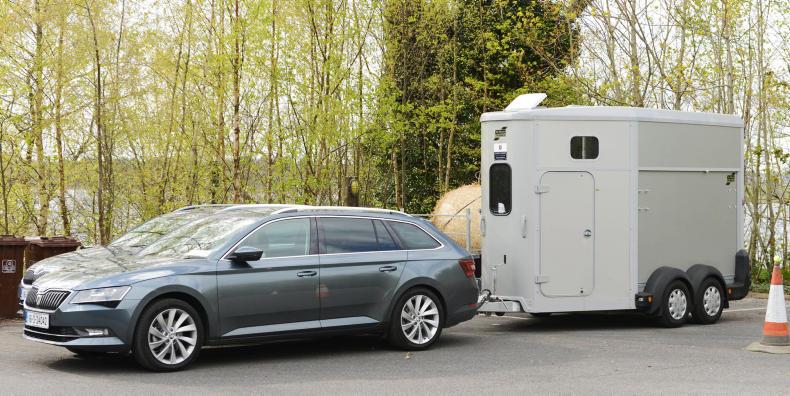
LOYALTY CODE:
The paper code cannot be redeemed when browsing in private/incognito mode. Please go to a normal browser window and enter the code there

LOYALTY CODE:
The paper code cannot be redeemed when browsing in private/incognito mode. Please go to a normal browser window and enter the code there
This content is copyright protected!
However, if you would like to share the information in this article, you may use the headline, summary and link below:
Title: How much can I tow behind my car?
Much confusion exists over the use of trailers and towing vehicles, braking requirements, legal weights and the number of axles needed. James Maloney separates fact from fiction
https://www.farmersjournal.ie/how-much-can-i-tow-behind-my-car-233834

ENTER YOUR LOYALTY CODE:
The reader loyalty code gives you full access to the site from when you enter it until the following Wednesday at 9pm. Find your unique code on the back page of Irish Country Living every week.

CODE ACCEPTED

You have full access to farmersjournal.ie on this browser until 9pm next Wednesday. Thank you for buying the paper and using the code.

CODE NOT VALID
Please try again or contact us.
For assistance, call 01 4199525
or email subs@farmersjournal.ie
Sign in

Incorrect details
Please try again or reset password
If would like to speak to a member of
our team, please call us on 01-4199525
Reset
password
Please enter your email address and we
will send you a link to reset your password

If would like to speak to a member of
our team, please call us on 01-4199525
Link sent to
your email
address
![]()
We have sent an email to your address.
Please click on the link in this email to reset
your password. If you can't find it in your inbox,
please check your spam folder. If you can't
find the email, please call us on 01-4199525.
![]()
Email address
not recognised
There is no subscription associated with this email
address. To read our subscriber-only content.
please subscribe or use the reader loyalty code.
If would like to speak to a member of
our team, please call us on 01-4199525
 This is a subscriber-only article
This is a subscriber-only article
Update Success !
The first point is that the maximum trailer weight is controlled by the towing capacity of the vehicle (See Table 1). Every type of vehicle is designed to tow a maximum weight depending on the specification size and braking efficiency of the vehicle.
In all probability, a typical family saloon would not be legally allowed to tow a loaded double horsebox or a livestock trailer over 8ft x 4ft. Every trailer is designed by the manufacturer to carry the weight intended for use.
Some specifications may require a double or single axle or even triple axle trailer to carry out the task. Trailer manufacturers differ in the weights that each axle can carry. This is up to the manufacturer’s specification choices to meet certification guidelines.
Trailers using triple axles are often longer to carry longer items such as boats, bales and timber beams, not entitling them to go over 3,500kg.

Myth
Family cars are not allowed to tow double-axle trailers. This is not true. A car can tow a trailer up to 750kg unbraked, regardless of the number of axles fitted.
In reality, this will not happen as a trailer of this class will only use one axle to reduce weight and increase the payload in the trailer. If the trailer is braked, family saloon cars can tow between 1,600kg and 2,000kg, including the weight of the trailer. It is of benefit to have a lighter trailer when the trailer is unbraked. Trips to the dump and occasional meal runs can be achieved keeping under the 750kg limit.
Fact
The legal speed of any towing vehicle is 80km/h on the road. The 120km/h speed limits no longer apply when towing any trailer.
Myth
The more axles on the trailer, the more weight I can carry. This is not true – the weight is governed by the towing vehicle. The rating on the vehicle will determine how much load can be placed in the trailer. The trailer by design must also be capable of handling the weight. Plates found on the side or drawbar will specify the weight certified for load on the trailer.
Fact
All trailers capable of holding 750kg and over are required to have their own braking system.
License requirements
A category B driving licence authorises you to drive a car, van or 4x4 which has a maximum mass (as specified by the manufacturer) of not more than 3,500kg and is designed and constructed to carry no more than eight passengers in addition to the driver.
You may tow a trailer with a maximum mass (again as specified by the manufacturer) not greater than 750kg, or where the maximum mass is more than 750kg, the combined maximum mass of the towing vehicle and the trailer is not greater than 3,500kg.
To put it simply, if the vehicle and the trailer in combination is over 3,500kg, this category of licence will not be legal. There is one scenario that allows more than 750kg to be towed in the trailer.
For example, if towing a trailer using a Volkswagen Passat that has a gross vehicle weight of 2000kg, then a trailer carrying 1,500kg including its own weight is legal as it is under the maximum authorised mass (MAM) of 3,500kg.
Towing the exact same trailer with a Land Cruiser would push the driver over the weight limit, requiring them to apply and pass the test for a category BE licence. With BE, the trailer and load can weigh up to 3,500kg and your vehicle can weigh up to the same maximum of 3.5t, bringing the combined weight to 7,000kg.
Another interesting point here is that the Volkswagen Passat is certified by the manufacturer to tow 2,000kg. This would push this car and combination into the BE licence category. The number of axles on the trailer has nothing to do with licence requirements – it is all down to weight.
Conclusion
The best advice is to find out the towing capacity of the vehicle you are using, and to ensure that you have the correct category of licence for the combination in use.
SHARING OPTIONS: